Do you have a question about the Chevrolet Traverse 2013 and is the answer not in the manual?
Overview of the vehicle's dashboard layout and controls.
Key features for starting and operating the vehicle for the first time.
Operation of vehicle access systems, including locks and windows.
Adjustment and use of seating, head restraints, and safety belts.
Explanation of dashboard gauges, warning lights, and vehicle controls.
How to operate the vehicle's heating, ventilation, and air conditioning.
Essential information for safe and efficient operation of the vehicle.
General advice on vehicle maintenance and ownership.
Guidance on performing routine checks and basic service.
Information on checking, adding, and changing engine oil for optimal performance.
How to maintain the vehicle's cooling system for proper engine temperature.
Details on tire types, maintenance, pressure, and replacement.
Operation of vehicle keys, door locks, and security features.
How to operate vehicle doors, including the liftgate.
Information on the vehicle's anti-theft system and alarm.
Operation of power windows, including express features.
Explains hazard symbols and safety messages in the manual.
Explains common symbols used in the owner's manual and on the vehicle.
Provides meanings for various symbols found on the vehicle's controls and displays.
Overview of the vehicle's dashboard layout and controls.
Key features for starting and operating the vehicle for the first time.
Operation of vehicle access systems, including locks and windows.
Adjustment and use of seating, head restraints, and safety belts.
How to operate the vehicle's heating, ventilation, and air conditioning.
Information on using the cruise control system for speed management.
Overview of the OnStar system and its services.
Details on various storage areas within the vehicle.
Instructions for opening, locking, and unlocking the glove box.
Information on cargo covers, tie-downs, and cargo management systems.
Guidance on using and safety precautions for the roof rack system.
Explanation of primary vehicle controls, like steering wheel and lighting.
Understanding dashboard warning lights, gauges, and indicators.
Overview of the vehicle's main instrument cluster display.
Features and operation of the Driver Information Center (DIC).
How to use the DIC display and buttons to customize vehicle settings.
Information on exterior lamp controls and features.
How to operate headlamps, parking lamps, and other exterior lights.
Details on interior lighting controls and features.
Explanation of entry lighting, theater dimming, and delayed lighting features.
Overview of the vehicle's infotainment system and its features.
How to operate the AM-FM and Satellite radio systems.
Information on using CD, MP3, and auxiliary devices with the audio system.
Details on the rear seat audio and video entertainment system.
How to connect and use a cell phone with the vehicle's Bluetooth system.
How to adjust various infotainment system preferences and settings.
Overview of the vehicle's heating, cooling, and ventilation system.
Operation of the dual-zone automatic climate control system.
How to use the climate controls for the rear passenger area.
How to adjust the direction and amount of airflow from the vents.
Information on replacing the passenger compartment air filter.
Tips for safe driving, including avoiding distractions and driving defensively.
Information on proper braking techniques and vehicle control.
Procedures for starting the engine and operating the vehicle.
How to use the automatic transmission, including manual mode.
Instructions for using the cruise control system for speed maintenance.
Information on recommended fuel types and filling the tank.
General guidelines and tips for towing trailers safely.
General advice on vehicle maintenance and ownership.
Guidance on performing routine checks and basic service.
Information on checking, adding, and changing engine oil for optimal performance.
Details on tire types, maintenance, pressure, and replacement.
General advice on vehicle maintenance and ownership.
Recommended maintenance intervals and services for the vehicle.
Specific services for severe driving conditions or commercial use.
Tips for maintaining vehicle performance and avoiding costly repairs.
List of approved fluids, lubricants, and replacement parts.
A log to record vehicle service dates and details.
Information on identifying the vehicle and its key identification numbers.
Location and importance of the Vehicle Identification Number.
Details on the label in the glove box containing vehicle specific information.
Information on vehicle capacities and specifications.
Approximate capacities for fluids and key vehicle specifications.
General information for vehicle owners regarding satisfaction and support.
Steps to follow if you are unsatisfied with dealership service.
How to report vehicle safety defects to NHTSA.
Information on vehicle data recording and privacy policies.
Overview of the OnStar system and its features.
Introduction to the OnStar system and its capabilities.
Details on available OnStar services like Emergency, Security, and Navigation.
How to use OnStar for emergency assistance and Automatic Crash Response.
Information on OnStar security features like Stolen Vehicle Assistance.
How to use OnStar's navigation services for directions.
Information on connecting cell phones and controlling the vehicle remotely.
Overview of the vehicle's dashboard layout and controls.
Key features for starting and operating the vehicle for the first time.
Operation of vehicle access systems, including locks and windows.
Adjustment and use of seating, head restraints, and safety belts.
Explanation of dashboard gauges, warning lights, and vehicle controls.
How to operate the vehicle's heating, ventilation, and air conditioning.
Essential information for safe and efficient operation of the vehicle.
General advice on vehicle maintenance and ownership.
Guidance on performing routine checks and basic service.
Information on checking, adding, and changing engine oil for optimal performance.
How to maintain the vehicle's cooling system for proper engine temperature.
Details on tire types, maintenance, pressure, and replacement.
Operation of vehicle keys, door locks, and security features.
How to operate vehicle doors, including the liftgate.
Information on the vehicle's anti-theft system and alarm.
Operation of power windows, including express features.
Explains hazard symbols and safety messages in the manual.
Explains common symbols used in the owner's manual and on the vehicle.
Provides meanings for various symbols found on the vehicle's controls and displays.
Overview of the vehicle's dashboard layout and controls.
Key features for starting and operating the vehicle for the first time.
Operation of vehicle access systems, including locks and windows.
Adjustment and use of seating, head restraints, and safety belts.
How to operate the vehicle's heating, ventilation, and air conditioning.
Information on using the cruise control system for speed management.
Overview of the OnStar system and its services.
Details on various storage areas within the vehicle.
Instructions for opening, locking, and unlocking the glove box.
Information on cargo covers, tie-downs, and cargo management systems.
Guidance on using and safety precautions for the roof rack system.
Explanation of primary vehicle controls, like steering wheel and lighting.
Understanding dashboard warning lights, gauges, and indicators.
Overview of the vehicle's main instrument cluster display.
Features and operation of the Driver Information Center (DIC).
How to use the DIC display and buttons to customize vehicle settings.
Information on exterior lamp controls and features.
How to operate headlamps, parking lamps, and other exterior lights.
Details on interior lighting controls and features.
Explanation of entry lighting, theater dimming, and delayed lighting features.
Overview of the vehicle's infotainment system and its features.
How to operate the AM-FM and Satellite radio systems.
Information on using CD, MP3, and auxiliary devices with the audio system.
Details on the rear seat audio and video entertainment system.
How to connect and use a cell phone with the vehicle's Bluetooth system.
How to adjust various infotainment system preferences and settings.
Overview of the vehicle's heating, cooling, and ventilation system.
Operation of the dual-zone automatic climate control system.
How to use the climate controls for the rear passenger area.
How to adjust the direction and amount of airflow from the vents.
Information on replacing the passenger compartment air filter.
Tips for safe driving, including avoiding distractions and driving defensively.
Information on proper braking techniques and vehicle control.
Procedures for starting the engine and operating the vehicle.
How to use the automatic transmission, including manual mode.
Instructions for using the cruise control system for speed maintenance.
Information on recommended fuel types and filling the tank.
General guidelines and tips for towing trailers safely.
General advice on vehicle maintenance and ownership.
Guidance on performing routine checks and basic service.
Information on checking, adding, and changing engine oil for optimal performance.
Details on tire types, maintenance, pressure, and replacement.
General advice on vehicle maintenance and ownership.
Recommended maintenance intervals and services for the vehicle.
Specific services for severe driving conditions or commercial use.
Tips for maintaining vehicle performance and avoiding costly repairs.
List of approved fluids, lubricants, and replacement parts.
A log to record vehicle service dates and details.
Information on identifying the vehicle and its key identification numbers.
Location and importance of the Vehicle Identification Number.
Details on the label in the glove box containing vehicle specific information.
Information on vehicle capacities and specifications.
Approximate capacities for fluids and key vehicle specifications.
General information for vehicle owners regarding satisfaction and support.
Steps to follow if you are unsatisfied with dealership service.
How to report vehicle safety defects to NHTSA.
Information on vehicle data recording and privacy policies.
Overview of the OnStar system and its features.
Introduction to the OnStar system and its capabilities.
Details on available OnStar services like Emergency, Security, and Navigation.
How to use OnStar for emergency assistance and Automatic Crash Response.
Information on OnStar security features like Stolen Vehicle Assistance.
How to use OnStar's navigation services for directions.
Information on connecting cell phones and controlling the vehicle remotely.
| Brand | Chevrolet |
|---|---|
| Model | Traverse 2013 |
| Category | Automobile |
| Language | English |



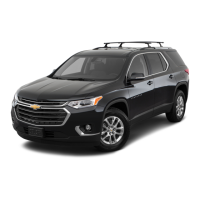


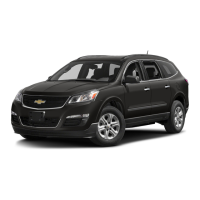


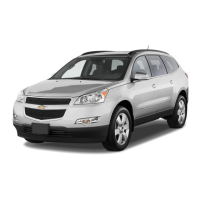
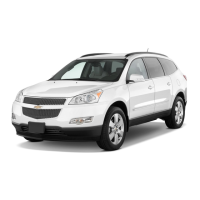
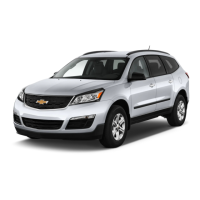
